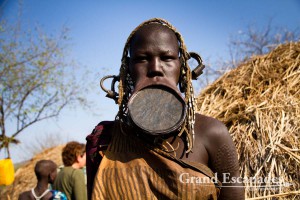
The most distinctive of all ethnic groups in the Omo Valley: the Mursi, famous for the huge Lip Plates the women are sporting. Mago National Park, near Jinka, Lower Omo Valley, South Ethiopia
There are not many places like this on this planet! Where do you find so many different cultures and ethnic groups in a relatively small area who still cling to their traditional way of life? This is absolutely unique, even the “Birr for Photo” business.
The Omo Valley can only be travelled cheaply if you have lots of time and are willing to stay in very, very simple accommodations. Speaking Amharic helps if you expect more interaction than “eat – sleep – bus”. The bus service is still very infrequent and unreliable, and the few busses are hopelessly full. Interaction with the local population is simply impossible without a local guide and a half way decent room sells for 35 to 50 USD, even more in the high season.
We met one person who travelled independently, one French guy who used public busses: his time frame was 5 weeks. A few people we passed were driving their own car. Some were on longer trips through Africa. Probably you can learn how to deal with the animals on the road and orientation is easy, because it is basically a circuit. Such independent and cheap transport still leaves you with a communication problem.
As a consequence, almost all tourists use the expensive services of tour operators who take them along the “Classical Circuit” of the Lower Omo Valley. This journey can be done in a minimum of 8 days, but that means a lot of time on the road. For this trip we paid 695 Euros per person in a group of 4 people (995 Euros if we only had been the two of us).
The Omo Valley definitely remains off the beaten tracks, although the impact of tourism can be strongly felt. And tourism here is more obvious than in other parts of the world. For one reason, the focus of tourists is completely on the very unique people and their traditions. That is why everybody comes here. The other reason is the complete clash of culture. Mostly very wealthy, middle-aged to elderly people come for a week and point their expensive cameras towards people who still live like in prehistoric times. It seems all they want from each other is a photo in exchange for 2 Birr / 10 cents. This has led to an unparalleled nuisance: the omnipresent “Birr for Photo” business. Never before were we so concerned about the footprint we leave in a region.
Particularly during the Christmas season, there seems to be quite a number of tourists around. This impression results mainly from the fact that there is only one circular road covering the area and everybody is travelling on it. Moreover, since there are so few restaurants and decent hotels on this circuit, everybody stops more or less at the same ones. Last but not least, since all tourists travel in modern 4WD, they can be easily spotted! The number of tourists is increasing very fast and this trend probably will continue since the roads all over the Omo Valley are being paved, making it more accessible, also during the rainy season.
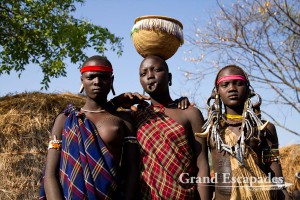
The most distinctive of all ethnic groups in the Omo Valley: the Mursi, famous for the huge Lip Plates the women are sporting. Mago National Park, near Jinka, Lower Omo Valley, South Ethiopia
We travelled the Omo Valley in December 2010 for 8 days and then spent another 6 days in the Danakil Depression. The first leg of this trip took us from Addis Abeba to Arba Minch (Dorze Village & Lake Chamo), Karat-Konso (Konso Village), Arbore (Arbore village), Turmi (Hamer, Bull – Jumping Ceremony & Dimeka), Omorate (Dasanech Village), Jinka (Ari Village, Mago National Park & the Mursi), Key Afer (Banna) & back via Arba Minch to Addis Abeba. This is basically the “classical circuit” of the Lower Omo Valley.
When thinking of the Omo Valley, this will always remain in our memories:
- The incredible variety of peoples, cultures and traditional ways of life
- The Bull – Jumping Ceremony, a fascinating but also very disturbing experience
- The Banna market in Key Afar, where the Banna would care little about our presence
- A relaxing afternoon in an Ari village, where we observed the chores of daily life and joined in
- Locals walking incredible distances to the next village or the weekly market
- Women carrying unbelievably heavy loads for hours and hours
- Large omnipresent cattle herds
- Unfinished roads – there seem to be hundreds of kilometers of roads under construction
- A well organized and professional tour from Experience Ethiopia Travel and a very good driver / guide: Matthew
A few things we did not like:
- The “Birr for Photo Business” is the only interaction in some villages (Mursi, Dasanech, Arbore) and visits can turn into sheer madness
- An incredible clash of cultures: peoples following ancient traditions versa wealthy westerns
- The very long drives: we spent an average of 6 to 7 hours per day in the jeep
Things we would do differently:
- Explore the other side of the Omo River, which is still less touched by tourism
- Take more time to be able to digest all these overwhelming impressions
- Try to negotiate a “flat rate” for photography in each village. It would enable a much more relaxed experience and maybe somehow an interaction with the people. True, it is easier said than done: we tried, and tried, and tried … and failed!

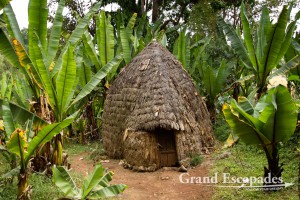
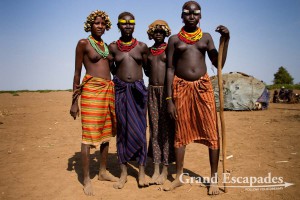
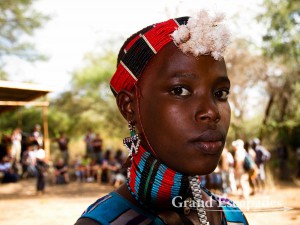
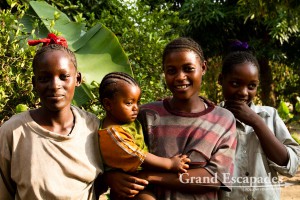
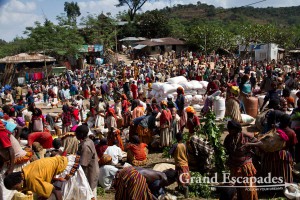
No comments yet.